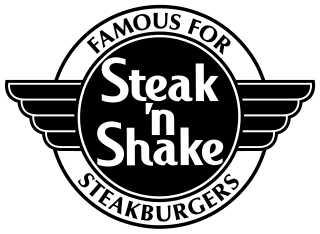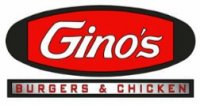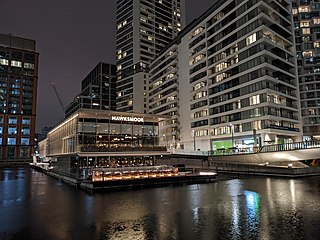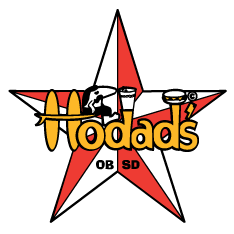 | |
| Company type | Private |
|---|---|
| Genre | Dining |
| Founded | 1966 |
| Founder | Fred and Lorraine Halleman |
| Headquarters | , US |

Boll Weevil is a casual dining chain of hamburger restaurants located in San Diego, California, United States.
 | |
| Company type | Private |
|---|---|
| Genre | Dining |
| Founded | 1966 |
| Founder | Fred and Lorraine Halleman |
| Headquarters | , US |

Boll Weevil is a casual dining chain of hamburger restaurants located in San Diego, California, United States.
Boll Weevil was founded in 1966 by Fred and Lorraine Halleman. The original location was adjacent to the upscale Cotton Patch steakhouse, with the Boll Weevil name referring to a smaller restaurant spawned from a cotton patch. [1] Both were located in San Diego on Midway Drive, near Barnett Ave and Pacific Highway in Point Loma. In the first Boll Weevil restaurant, beef left over from the trimmings of prime steak prepared at the Cotton Patch steakhouse were used to prepare burgers. [1] Because of the success of the chain of Boll Weevil restaurants, the Cotton Patch eventually closed. [1] Entrepreneur Fred Halleman assisted in establishing 20 Boll Weevil restaurants across the country. [2] On September 15, 2008, the company-owned restaurants were closed down as the parent company entered Chapter 7 bankruptcy. A few independently owned franchise stores remain open. [3]
As of July 2017, the website representing the remaining locations (which are independently owned) lists five stores still operating. [4]
Boll Weevil restaurants are decorated in a style reminiscent of the American Old West, and also featured pool tables and video games. [5]
While discussing Hodad's, OB Rag editor Frank Gormlie criticized the food served at Boll-Weevil's as being too greasy. [6] San Diego Reader editor Ben Kers included Boll Weevil in his list of "fourteen more things you’ll never see in San Diego again". He said that while there are still a few restaurants bearing the name, he felt that the food was no longer the same as it once was. [7]

A hamburger, or simply a burger, is a dish consisting of fillings—usually a patty of ground meat, typically beef—placed inside a sliced bun or bread roll. The patties are often served with cheese, lettuce, tomato, onion, pickles, bacon, or chilis with condiments such as ketchup, mustard, mayonnaise, relish or a "special sauce", often a variation of Thousand Island dressing, and are frequently placed on sesame seed buns. A hamburger patty topped with cheese is called a cheeseburger. Under some definitions, and in some cultures, a burger is considered a sandwich.

A cheeseburger is a hamburger with a slice of melted cheese on top of the meat patty, added near the end of the cooking time. Cheeseburgers can include variations in structure, ingredients and composition. As with other hamburgers, a cheeseburger may include various condiments and other toppings such as lettuce, tomato, onion, pickles, bacon, avocado, mushrooms, mayonnaise, ketchup, and mustard.
Ground beef, minced beef or beef mince - often just generically referred to as mince or mincemeat, is beef that has been finely chopped with a knife, meat grinder, mincer or mincing machine. It is used in many recipes including hamburgers, bolognese sauce, meatloaf, meatballs, kofta, and burritos.

Ocean Beach is a beachfront neighborhood in San Diego, California.

Steak 'n Shake Operations, Inc., doing business as Steak 'n Shake, is an American casual restaurant chain concentrated primarily in the Midwestern United States with locations also in the South, Mid-Atlantic, Western United States, Europe, and the Middle East. The company is headquartered in Indianapolis, Indiana, and is a wholly owned subsidiary of Biglari Holdings. As of 2018, 628 Steak 'n Shake restaurants were in operation; of those 414 were corporate-owned, and 214 franchised. The company has since attempted to convert to a fully franchised model.

Gino's Hamburgers was a fast-food restaurant chain founded in Baltimore, Maryland by Baltimore Colts defensive end Gino Marchetti and running back Alan Ameche, along with their close friends Joe Campanella, who played linebacker for six seasons for the Cleveland Browns and the Baltimore Colts and Louis Fischer, in 1957. A new group of restaurants under the Gino's name, involving some of the principals of the original chain, was started in 2010. Campanella left the group in 1963 and started his own restaurant, Rustler Steak House.

Jack's Family Restaurants, LP is an American fast food restaurant chain, headquartered and based in Birmingham. Restaurants feature sit-down dining, drive-thrus and takeout service. The menu features primarily burgers, fried chicken, breakfast and various other fast food items including french fries and soft drinks.
LongHorn Steakhouse is an American casual dining restaurant chain owned and operated by Darden Restaurants, headquartered in Orlando, Florida. As of 2023, LongHorn Steakhouse generated more than $2.5 billion in sales in its 563 locations.
As far back as the 1970s, international fast food restaurant chain Burger King has attempted to introduce a premium line of burgers. These sandwiches are part of a system which eventually became known as the barbell strategy; a plan designed to expand Burger King's menu with both more sophisticated, adult-oriented fare along with products that are more value-oriented. This program is intended to bring in a larger, more affluent adult audience who will be willing to spend more on the better quality products on one side while maintaining a lower cost value menu dedicated to a more cost-conscious audience on the other. The hope is that the customers would be drawn in initially for the lower prices of the value-menu and upgrade to the more expensive products, upping overall sales.

The cuisine of Omaha reflects the heritage and culture of Omaha, Nebraska.

Sirloin Stockade Steakhouse & Buffet is an American family-style all-you-can-eat buffet steakhouse restaurant chain and franchisor founded in Oklahoma City, Oklahoma, in 1966. As of June 2016, the parent company, Stockade Companies, operated over 80 restaurants in the United States and Mexico. Some restaurants are company-owned, and some are operated as franchises. Some Sirloin Stockade restaurants have closed in recent years, some of which were in business for a significant time. As of April 2024, there are 9 Sirloin Stockade locations in Kentucky, Missouri, Oklahoma, and Texas. The restaurants are typically 8,000–9,000 square feet (740–840 m2) in size and have around 100–115 employees at each location.

Ray's Hell Burger was a hamburger restaurant in Arlington, Virginia, part of a group of restaurants in the Washington metropolitan area under the "Ray's" name owned by restaurateur Michael Landrum.

Originally just a ground beef patty, as it is still interpreted in multiple languages, the first hamburger likely originated in Hamburg (Germany), hence its name; however, evidence also suggests that the United States may have later been the first country where two slices of bread and a ground beef patty were combined into a "hamburger sandwich" and sold as such. Shortly after this combination, the hamburger quickly included all of its currently typically characteristic trimmings, including onions, lettuce, and sliced pickles.
Winky's Hamburgers was a chain of hamburger fast food restaurants in and near Pittsburgh, Pennsylvania. It was founded by two brothers, Harold and Bernard Erenstein in 1962. Their slogans were "Fast Food Cheap" and "Winky's Makes You Happy To be Hungry." Their signs advertised "Winky's Hamburger 15¢"; other sandwiches offered were The Big Wink, The Great One, and The Ground Rounder. Hot dogs also were on the menu. One of the television commercials for the chain featured a puppet monster reading a list of signs featuring the names of the towns where restaurants were located. Upon learning that there was no Winky's in Wilmerding, the monster ate the panel, exclaiming, "There's no Winky's in Wilmerding!"

Hawksmoor is a British steakhouse and cocktail bar chain started in 2006.

Hodad's is a small chain of hamburger restaurants in San Diego, California, established in 1973 by husband and wife Byron and Virginia Hardin.

Hero Certified Burgers is a Canadian restaurant chain franchise that sells hamburgers and other quick service restaurant fare. It is based in Toronto, Ontario, Canada, and was founded in 2004. It had almost 60 locations as of March 2017, and opened its first store in the United States in 2015 in Elmwood Village, Buffalo, New York. The Buffalo location closed at the end of 2016.
[The Cotton Patch's] success gave birth to the Boll Weevil chain (beef left from trimming prime steaks was ground and sold as burgers next door at the first Boll Weevil). As the chain spread like weevils (the comparison is apt), the Cotton Patch gradually lessened in importance and was closed.